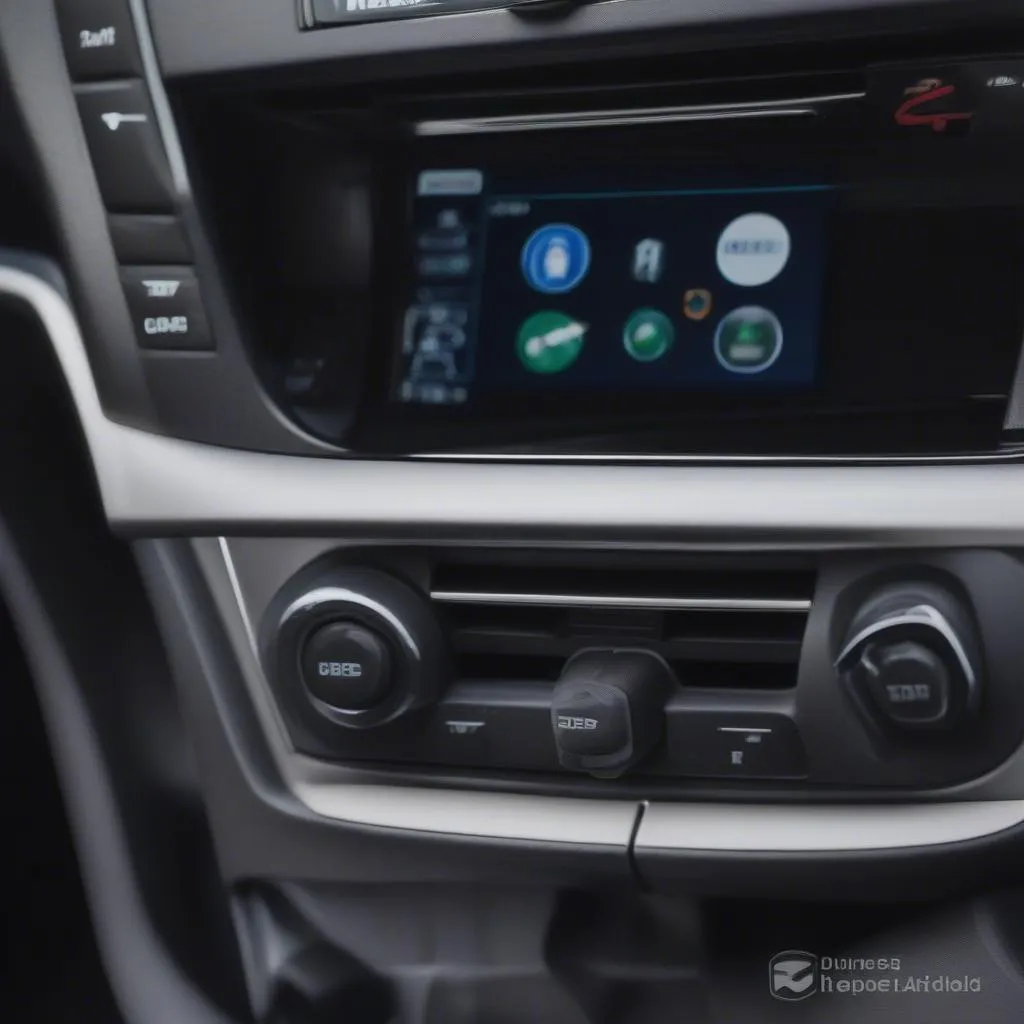Imagine this: You’re cruising down Sunset Boulevard in your sleek 2015 Mazda 6, the California sun glinting off the hood. Suddenly, a warning light flashes on your dashboard. Your heart skips a beat. What does it mean? Is it serious? Before panic sets in, remember the power of your car’s OBD-II connector. This little port is your window into your Mazda’s computer system, and knowing how to use it can save you time, money, and a whole lot of stress.
What is the 2015 Mazda 6 OBD-II Connector?
In simple terms, the OBD-II connector, often called the OBD port, is the point of communication between your car’s computer and the outside world. It’s like a USB port for your car, allowing you to access a treasure trove of information about your engine’s performance, emissions, and potential issues. Think of it as your car whispering secrets to a mechanic, or in this case, to you!
Why is the OBD-II Connector Important for My Mazda 6?
This little port plays a big role in:
- Diagnostics: Mechanics use it to read diagnostic trouble codes (DTCs), those cryptic codes that indicate what’s wrong with your car.
- Repairs: It helps mechanics pinpoint issues and monitor repairs in real-time.
- Customization: Enthusiasts use it to adjust performance settings and access hidden features.
Where Do I Find the OBD-II Connector on My Mazda 6?
In most 2015 Mazda 6 models, the OBD-II connector is located beneath the dashboard on the driver’s side, usually near the steering column or the fuse box. It’s a standardized 16-pin connector, shaped like a trapezoid.
 OBD-II Connector Location
OBD-II Connector Location
Common Questions about the 2015 Mazda 6 OBD-II Connector
Here are answers to some frequently asked questions:
-
Can I use any OBD-II scanner with my Mazda 6?
While generic OBD-II scanners can read basic codes, for more advanced functions or Mazda-specific codes, you might need a dedicated Mazda scanner or a high-end scanner that supports Mazda vehicles. -
What can I do with an OBD-II scanner on my Mazda 6?
Beyond reading and clearing trouble codes, you can monitor live data like engine RPM, coolant temperature, oxygen sensor readings, and more. Some scanners even allow you to reset service reminders or program new keys. -
Is it safe to use an OBD-II scanner myself?
Yes, using an OBD-II scanner is generally safe as long as you use it responsibly. However, avoid tampering with settings you don’t understand, as it could affect your car’s performance.
Taking Control of Your Mazda’s Health
Understanding your 2015 Mazda 6’s OBD-II connector empowers you to take control of your car’s maintenance and diagnosis. Whether you’re troubleshooting a warning light, monitoring engine performance, or simply curious about your car’s inner workings, the OBD-II port is your gateway to a wealth of information.
 2015 Mazda 6 on the Road
2015 Mazda 6 on the Road
Just like understanding the importance of regular oil changes or tire rotations, knowing how to leverage your OBD-II connector can lead to a smoother, more enjoyable, and potentially less expensive ownership experience. Remember, a little knowledge about your car can go a long way.
Explore More About Your Mazda
Interested in learning more about your Mazda’s diagnostic capabilities? You can find more valuable information and resources in our article about the Mazda BT-50 OBD Port Location, which explores similar concepts in another popular Mazda model.
Need help with your OBD-II scanner or diagnosing a car problem? Our team of automotive experts is here to assist you 24/7. Contact us via Whatsapp at +84767531508 for immediate support.
Do you have any other questions about your 2015 Mazda 6 OBD-II connector? Share them in the comments below!